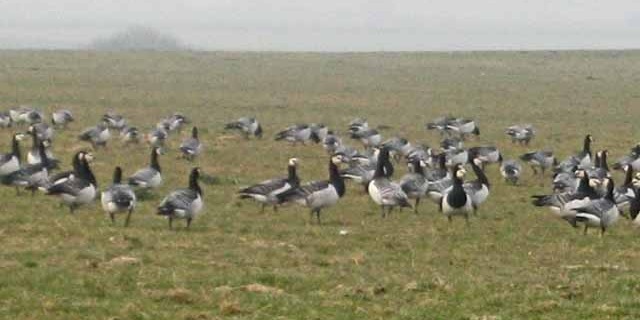A high-tech study is expected to help experts discover what impact proposed wind farms in the Firth of Forth could have on migrating geese.
With at least two large offshore wind farms planned in the Firth of Forth and another half dozen along the coast of Norway, the Wildfowl & Wetlands Trust (WWT) has fitted GPS satellite tags to five birds in a bid to determine their precise movements as they head north in the coming weeks.
The equipment will capture flight heights and the timing of the barnacle geese’s migratory movements and it is hoped this information will identify offshore and onshore wind farms where the risk of collision is low.
As most of the migrating geese are thought to rest overnight in the sea around the Firth of Forth before continuing their journey, if they spend the time in the same areas as the proposed wind farms then evidence of their precise movements could prove crucial in minimising any impact on the birds.Visit wwt.org.uk/maps to follow the progress of the barnacle geese.Dr Larry Griffin of WWT said, “There is a strong need to assess the impact of the wind farms currently planned along the international migratory corridor of the barnacle goose, a protected species, not only onshore and offshore in the Firth of Forth but also those planned and already in operation along the Norwegian coast.
“WWT has been closely monitoring the barnacle geese since the 1960s and since then, along with Norwegian and Dutch colleagues, has ringed over 10,000 birds.
“Numbers of the Svalbard barnacle goose, whose entire population winters on the Solway Firth, were down to as few as 300 in 1948.
“Through a combination of conservation effort with detailed research led by WWT over the last 50 years, numbers today have now risen to more than 35,000.”
Image used under Creative Commons licence courtesy of Geograph.co.uk user Oliver Dixon.
